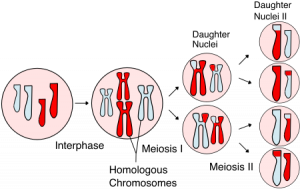Introduction
For this assignment, we are to pick a relatively complex term in our particular discipline and compose a parenthetical, sentence, and expanded definition to an audience of non-technical readers based on a chosen situation. The objectives of this assignment include understanding the importance of definitions in technical writing and recognizing how certain audiences and purposes indicate the need for definitions. Other objectives include distinguishing and selecting the appropriate level of detail of a definition based on the situation.
Reading Situation
A geneticist is explaining the term ‘meiosis’ to a patient.
Parenthetical definition
The geneticist explains how meiosis (type of cell division that produces sex cells) is important for sexual reproduction.
Sentence definition
Meiosis is a form of cell division in which the number of chromosomes are halved to produce sex cells for sexual reproduction. This form of cell division involves one round of chromosome duplication and two rounds of cell division (Mercier et al., 2015).
Expanded definition
Meiosis is a form of cell division in which the number of chromosomes are halved to produce sex cells for sexual reproduction. This form of cell division involves one round of chromosome duplication and two rounds of cell division (Mercier et al., 2015). Meiosis originates from the Greek word meioun, which means “to lessen.” This refers to how the number of chromosomes in the cells produced by meiosis are reduced to half their original amount (Bolcun-Filas & Schimenti, 2012). This reduction of chromosomes is important as two sex cells, one from each parent, will combine their chromosomes during sexual reproduction, thus maintaining the appropriate amount of DNA across generations. To gain a better understanding of how meiosis works, consider its main three parts:
- Interphase – Before meiosis is initiated, the cell grows to the appropriate size and undergoes chromosome replication. The cell is diploid (2 sets of chromosomes) at this stage, with each individual chromosome having a sister chromatid (duplicate chromosome from replication).
- Meiosis 1 – The cell divides into 2 cells with half of the amount of chromosomes. Each cell is now haploid (1 set of chromosomes) at the end of this stage, with each individual chromosome still having a sister chromatid.
- Meiosis 2 – The 2 cells each divide, producing 4 cells. Each cell is still haploid at the end of this stage, with the sister chromatids now separated.
The 3 main stages of meiosis can be visualized in Figure 1.

Figure 1: The 3 main stages of meiosis: Interphase, Meiosis 1, and Meiosis 2. Source: https://en.wikipedia.org/wiki/Meiosis
Meiosis is similar to the other form of cell division called mitosis, in that they both begin with one parent cell that duplicates its chromosomes. Also, both forms follow a similar sequence of events such as lining up the chromosomes in the middle and pulling them apart, and result in new cells.
However, there are many important differences between meiosis and mitosis. While meiosis functions to create sex cells, mitosis functions to divide somatic cells (non sex cells) (Sato et al., 2021). Meiosis only occurs in sexually reproducing organisms and involves two division steps, while mitosis occurs in almost all organisms and involves one division step. Furthermore, meiosis results in 4 haploid cells that are genetically unique from each other, and mitosis results in 2 diploid cells that are genetically identical to the parent cell.
References
Bolcun-Filas, E., & Schimenti, J. C. (2012). Genetics of meiosis and recombination in mice. International review of cell and molecular biology (pp. 179-227). Elsevier Science & Technology. https://doi.org/10.1016/B978-0-12-394309-5.00005-5
Mercier, R., Mézard, C., Jenczewski, E., Macaisne, N., & Grelon, M. (2015). The molecular biology of meiosis in plants. Annual Review of Plant Biology, 66(1), 297-327. https://doi.org/10.1146/annurev-arplant-050213-035923
Sato, M., Kakui, Y., & Toya, M. (2021). Tell the difference between mitosis and meiosis: Interplay between chromosomes, cytoskeleton, and cell cycle regulation. Frontiers in Cell and Developmental Biology, 9, 660322-660322. https://doi.org/10.3389/fcell.2021.660322
Leave a Reply